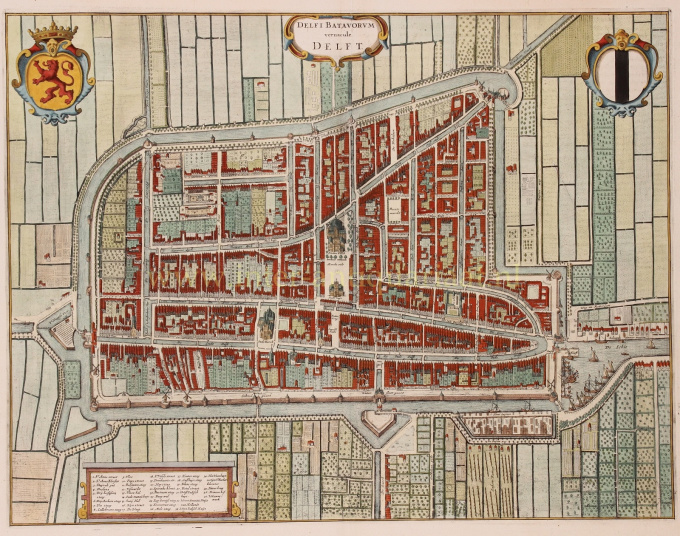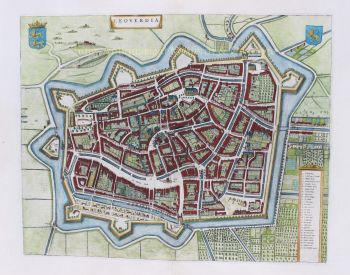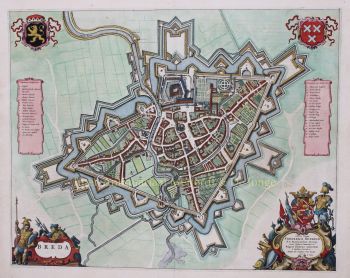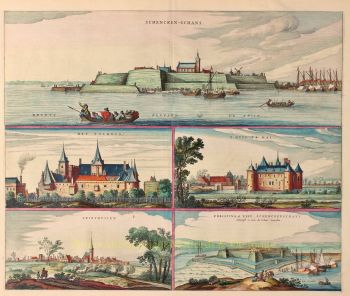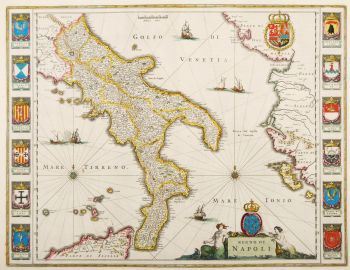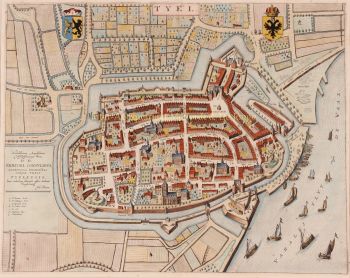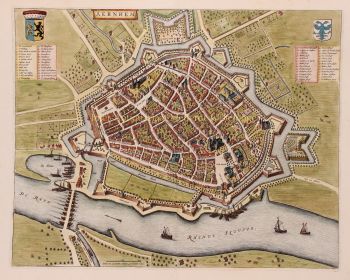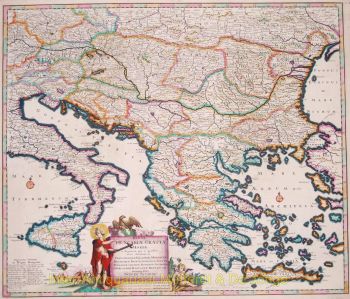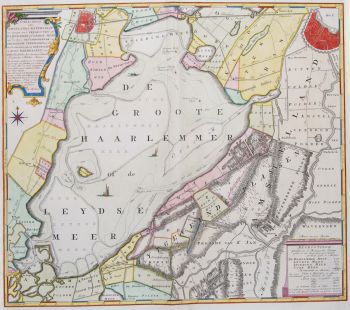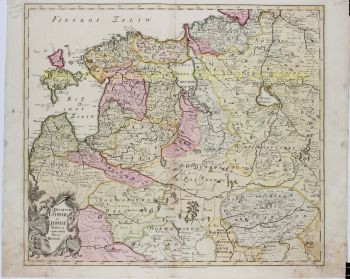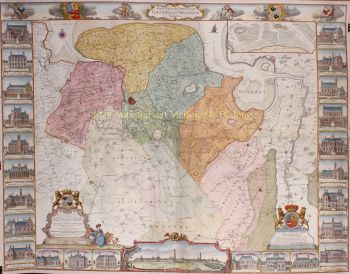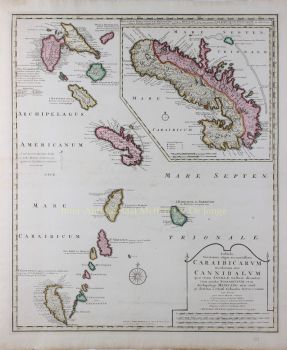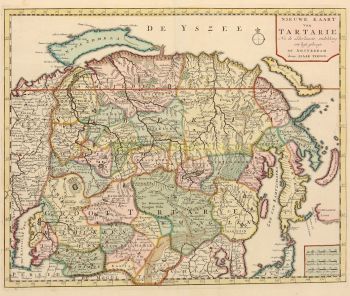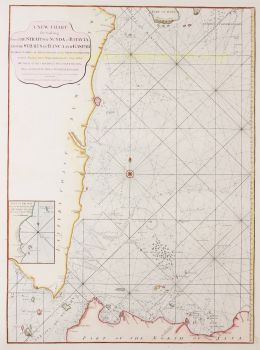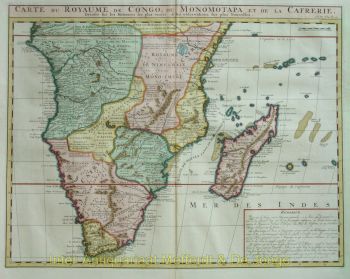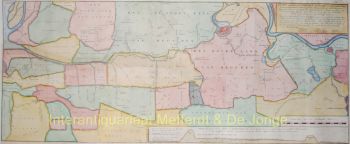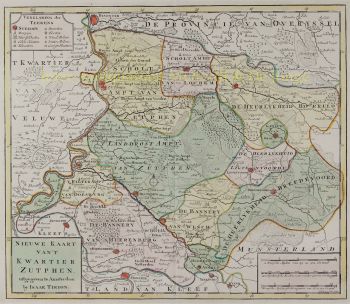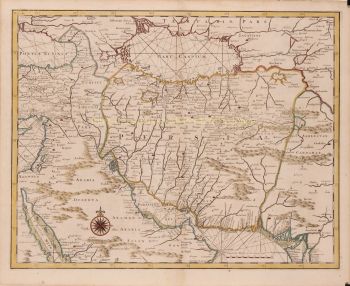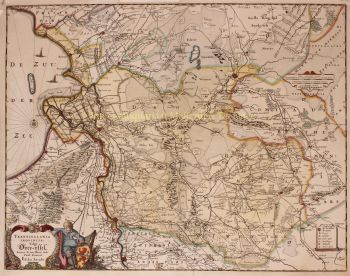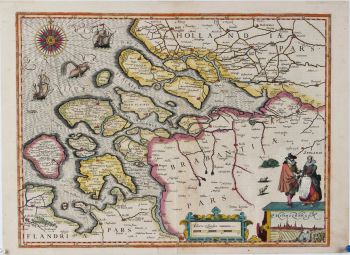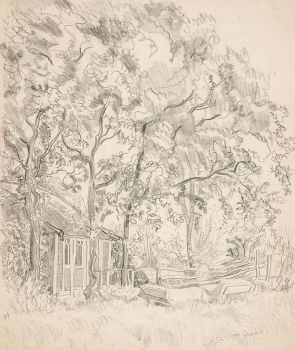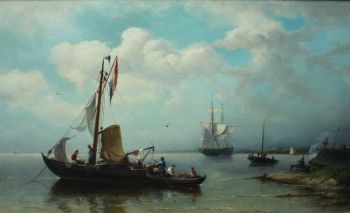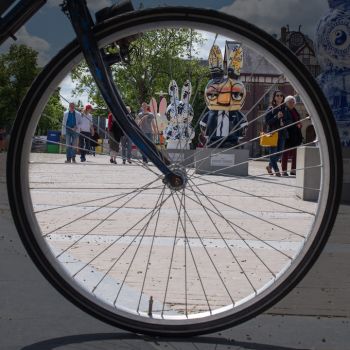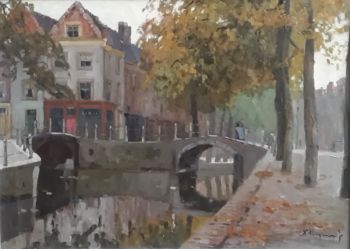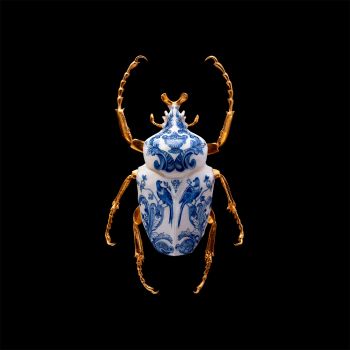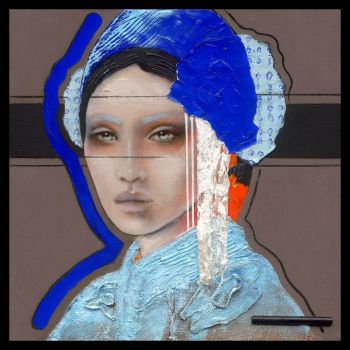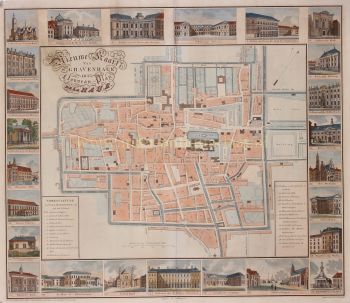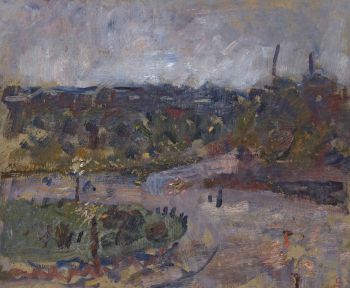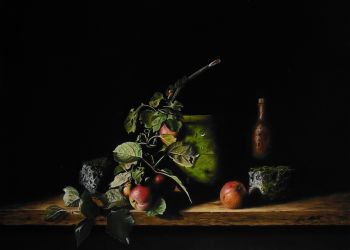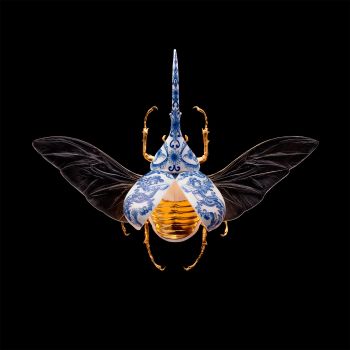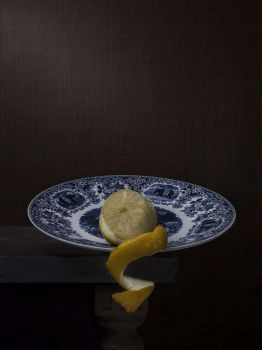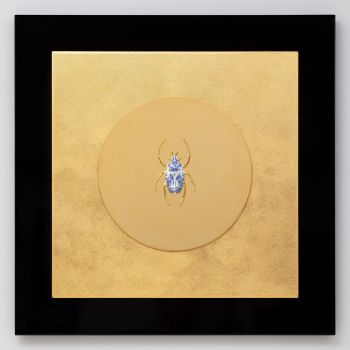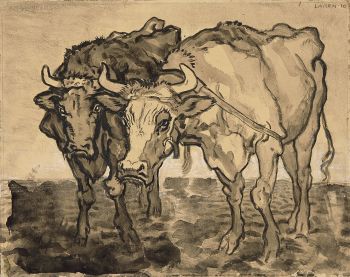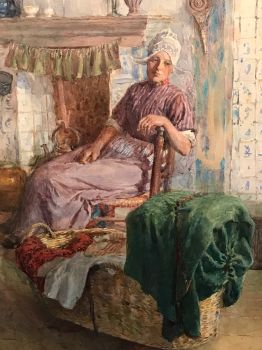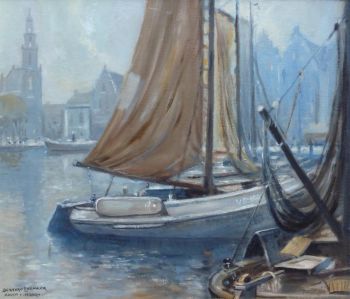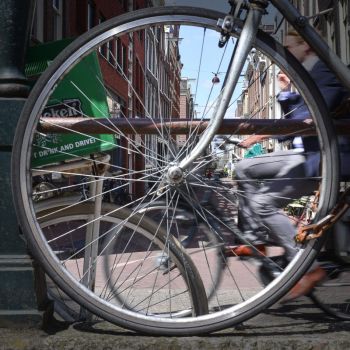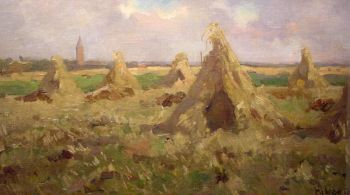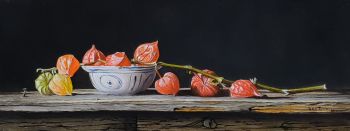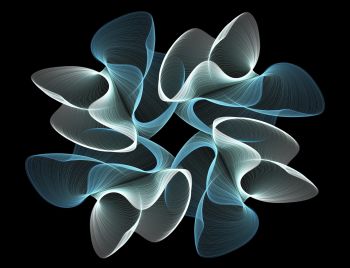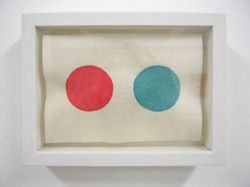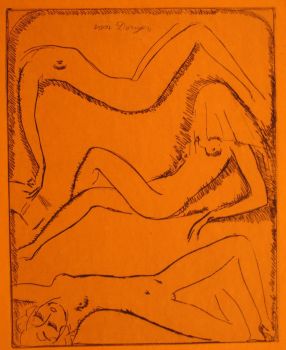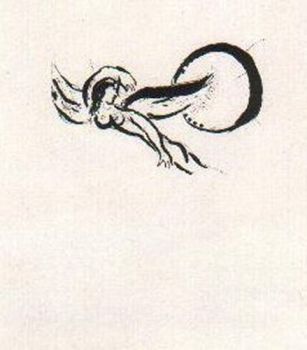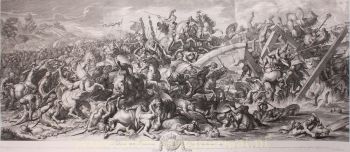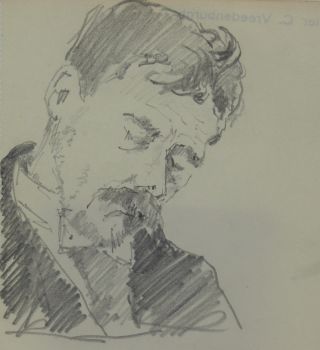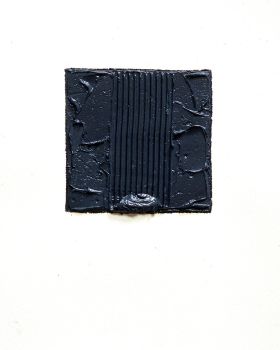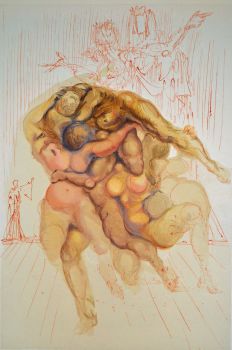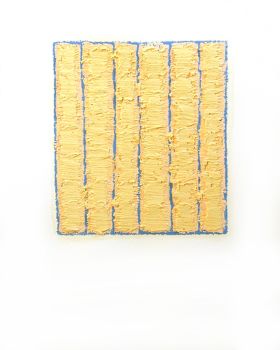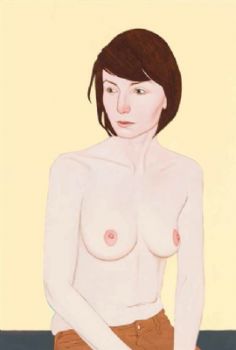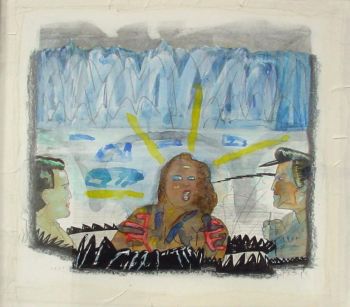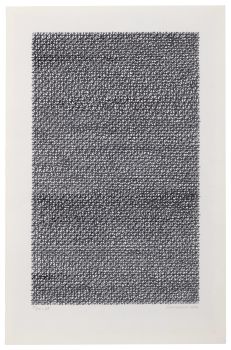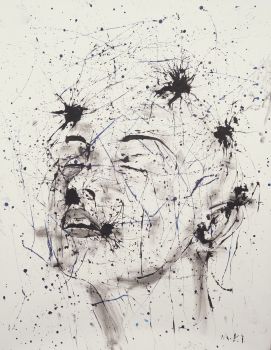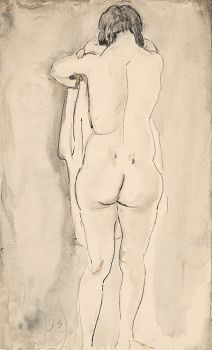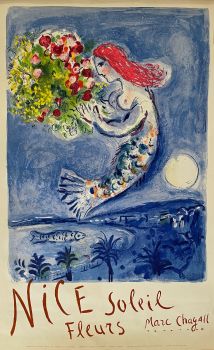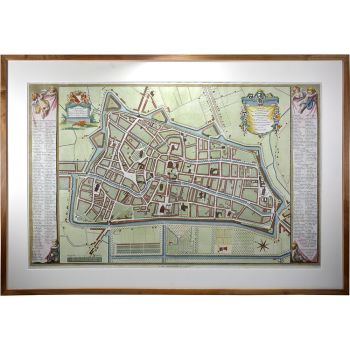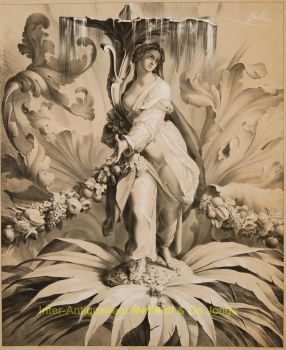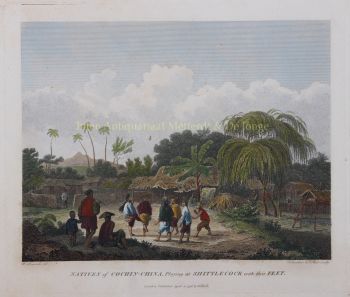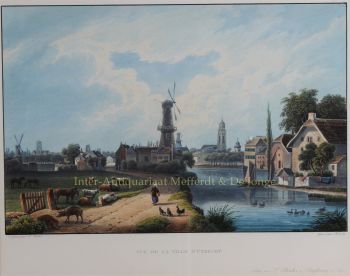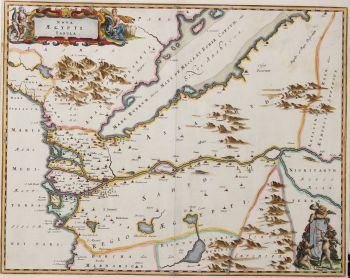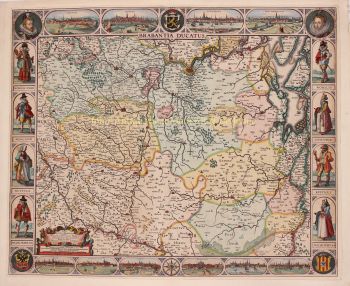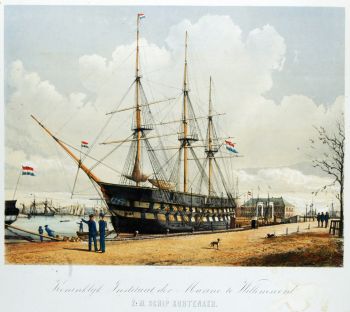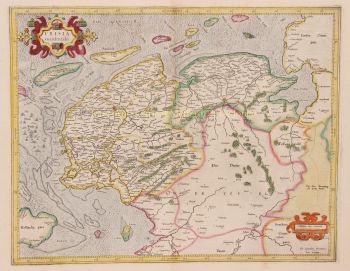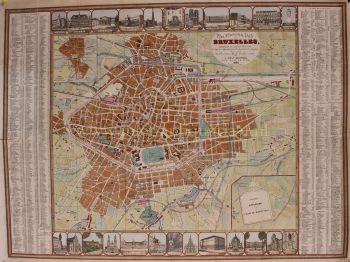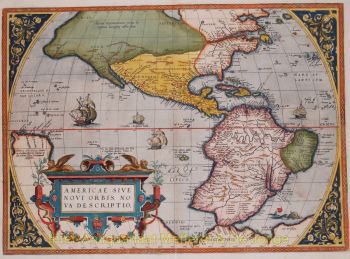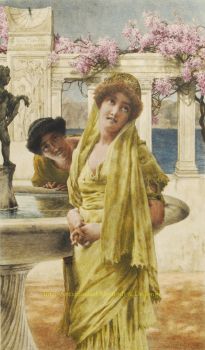The city of Delft in 1649 1649
Joan Blaeu
EncrerPapierImprimer
48 ⨯ 57 cm
€ 1.850
Inter-Antiquariaat Mefferdt & De Jonge
- Sur l'oeuvre d'artTHE CITY OF DELFT "Delfi Batavorum vernacule Delft", copper engraving, published in Amsterdam by Joan Blaeu in 1649. Size (print) 37,7 x 48,5 cm. Coloured by a later hand. Verso: Latin description of Delft. Until the 17th century, Delft was one of the major cities of Holland. Already in 1400, the city had 6500 inhabitants and was the third largest in size, after Dordrecht (8000) and Haarlem (7000). In 1560 Amsterdam with 28,000 inhabitants had become the largest city, followed by Delft, Leiden and Haarlem, each of which had about 14,000 inhabitants. In the 17th century, Delft experienced a new heyday. A Chamber of the VOC was established in Delft. The city sent a fleet to Southeast Asia three times a year, importing spices, Chinese porcelain and other luxury goods. The tradition of Delftware originated from the import of Chinese porcelain, with an extensive pottery industry. During the Eighty Years' War, Delft became a center of resistance against the Spanish, after several cities and territories managed to evade Spanish authority in the 1570s. Prince William of Orange briefly resided in Delft, in the former Sint-Agatha monastery, which has since been called Prinsenhof. After William of Orange was declared an outlaw by King Philip II, he was also murdered there by Balthasar Gerards in 1584. William of Orange is buried in the Nieuwe Kerk, clearly visible on the map on the market square. After William of Orange, 45 members of the House of Orange and the House of Orange-Nassau were buried in the royal crypt. This map was published after the Peace of Münster (1648) as part of Joan Blaeu's town book of the Netherlands "Novum Ac Magnum Theatrum Urbium Belgicae Liberae Ac Foederatae". The Amsterdam cartographer and publisher Joan Blaeu set himself the task of simultaneously achieving the objectives of Abraham Ortelius (famous for the publication of the first modern atlas in 1578) and Georg Braun and Franz Hogenberg (known for their town book published at the end of 1600): a multi-volume world atlas added by a number of town books. The town book of the United Netherlands was published in a Latin edition in 1649; the Dutch edition was printed in 1652. Some of the maps included in this work had already been published in older maps, other maps were made entirely new for Blaeu's town book. Price: Euro 1.850,-
- Sur l'artiste
Joan Blaeu (1596-1673), est née le 23 septembre 1596 à Alkmaar.
C'était un cartographe néerlandais né à Alkmaar. Il a suivi les traces de son père, le cartographe Willem Blaeu.
En 1620, il devient docteur en droit mais il rejoint l'œuvre de son père. En 1635, ils publient l'Atlas Novus (titre complet : Theatrum orbis terrarum, sive, Atlas novus) en deux volumes. Joan et son frère Cornelius ont repris l'atelier après la mort de leur père en 1638. Joan est devenu le cartographe officiel de la Compagnie néerlandaise des Indes orientales.
La carte du monde de Blaeu, Nova et Accuratissima Terrarum Orbis Tabula, incorporant les découvertes d'Abel Tasman, a été publiée en 1648. Cette carte était révolutionnaire en ce qu'elle "représente le système solaire selon les théories héliocentriques de Nicolas Copernic, qui montrent la terre tournant autour le soleil... Bien que le livre révolutionnaire de Copernic Sur les révolutions des sphères ait été imprimé pour la première fois en 1543, un peu plus d'un siècle plus tôt, Blaeu fut le premier cartographe à incorporer cette théorie héliocentrique révolutionnaire dans une carte du monde."
La carte de Blaeu a été copiée pour la carte du monde placée dans le trottoir du Groote Burger-Zaal du nouvel hôtel de ville d'Amsterdam, conçu par l'architecte néerlandais Jacob van Campen (aujourd'hui le palais royal d'Amsterdam), en 1655.
La Hollandia Nova de Blaeu a également été représentée dans son Archipelagus Orientalis sive Asiaticus publié en 1659 dans le Kurfürsten Atlas (Atlas du Grand Électeur). et utilisé par Melchisédech Thévenot pour produire sa carte, Hollandia Nova—Terre Australe (1664).
Sous le nom de "Jean Blaeu", il a également publié le 12 volume "Le Grand Atlas, ou Cosmographie blaviane, en laquelle est exactement décrite la terre, la mer, et le ciel". Une édition est datée de 1663. Elle était in-folio (540 x 340 mm) et contenait 593 cartes et planches gravées. En mars 2015, un exemplaire était en vente pour 750 000 £.
Vers 1649, Joan Blaeu publia une collection de cartes de villes hollandaises nommée Toonneel der Steeden (Vues de villes). En 1651, il fut élu au conseil d'Amsterdam. En 1654, Joan publie le premier atlas de l'Écosse, conçu par Timothy Pont. En 1662, il réédita l'Atlas Novus, également connu sous le nom d'Atlas Maior, en 11 volumes, et un pour les océans.
Une cosmologie était prévue comme projet suivant, mais un incendie détruisit complètement l'atelier en 1672.
Joan Blaeu mourut à Amsterdam l'année suivante, 1673. Il fut enterré dans la Westerkerk à Amsterdam.
Êtes-vous intéressé par l'achat de cette oeuvre?
Artwork details
Related artworks
- 1 - 4 / 12
- 1 - 4 / 24
Samuel Dejong
Anatomia Blue Heritage, Goliath Beetle Closed2020
Prix sur demandeVilla del Arte Galleries
Samuel Dejong
Anatomia Blue Heritage, Atlas Closed2017 - 2019
Prix sur demandeVilla del Arte Galleries
Bernard Leemker
'Volendammer vissersboten in de haven van Hoorn´20th century
Prix sur demandeGalerie Gabriëls
1 - 4 / 24- 1 - 4 / 24
- 1 - 4 / 12

